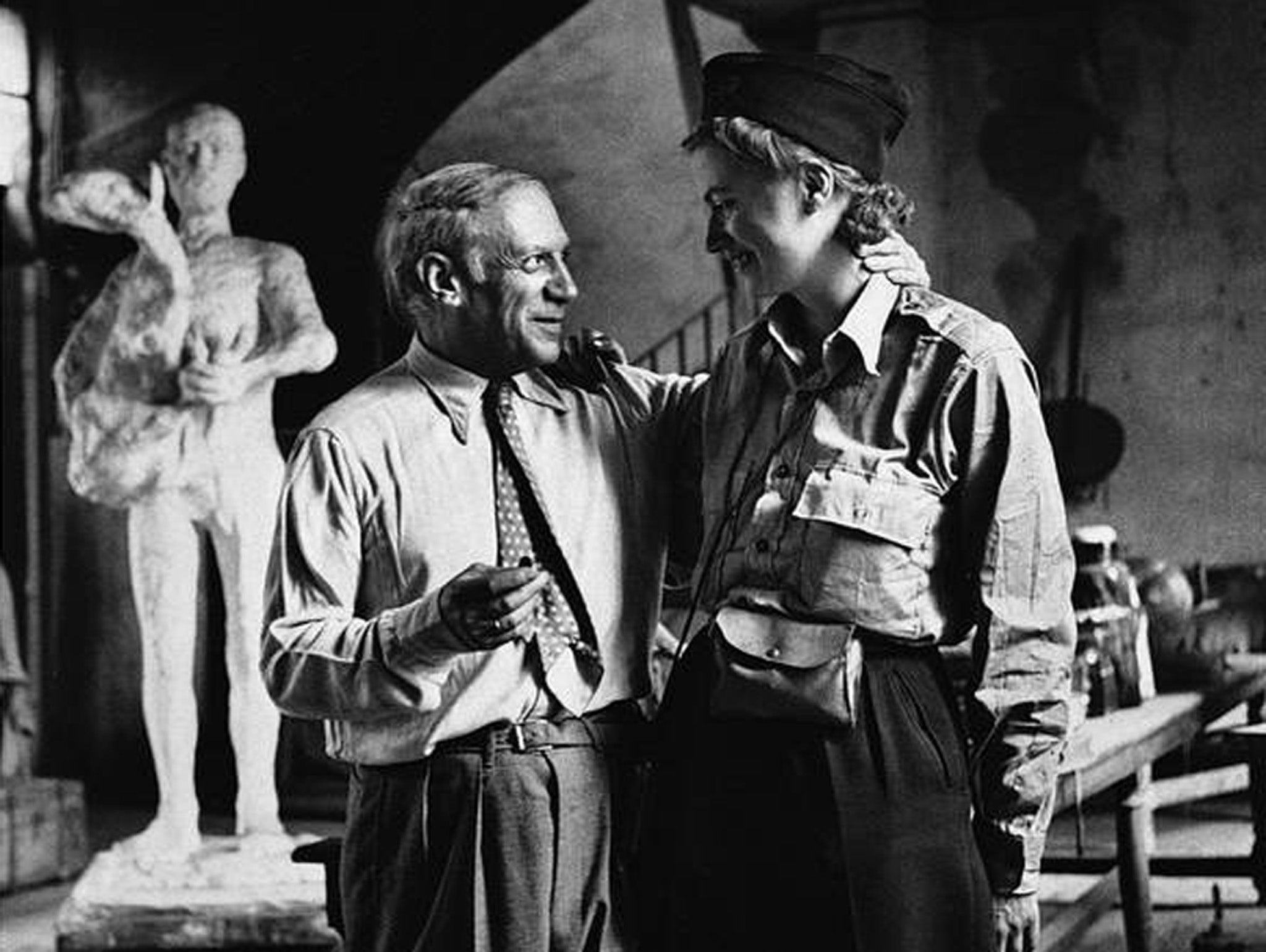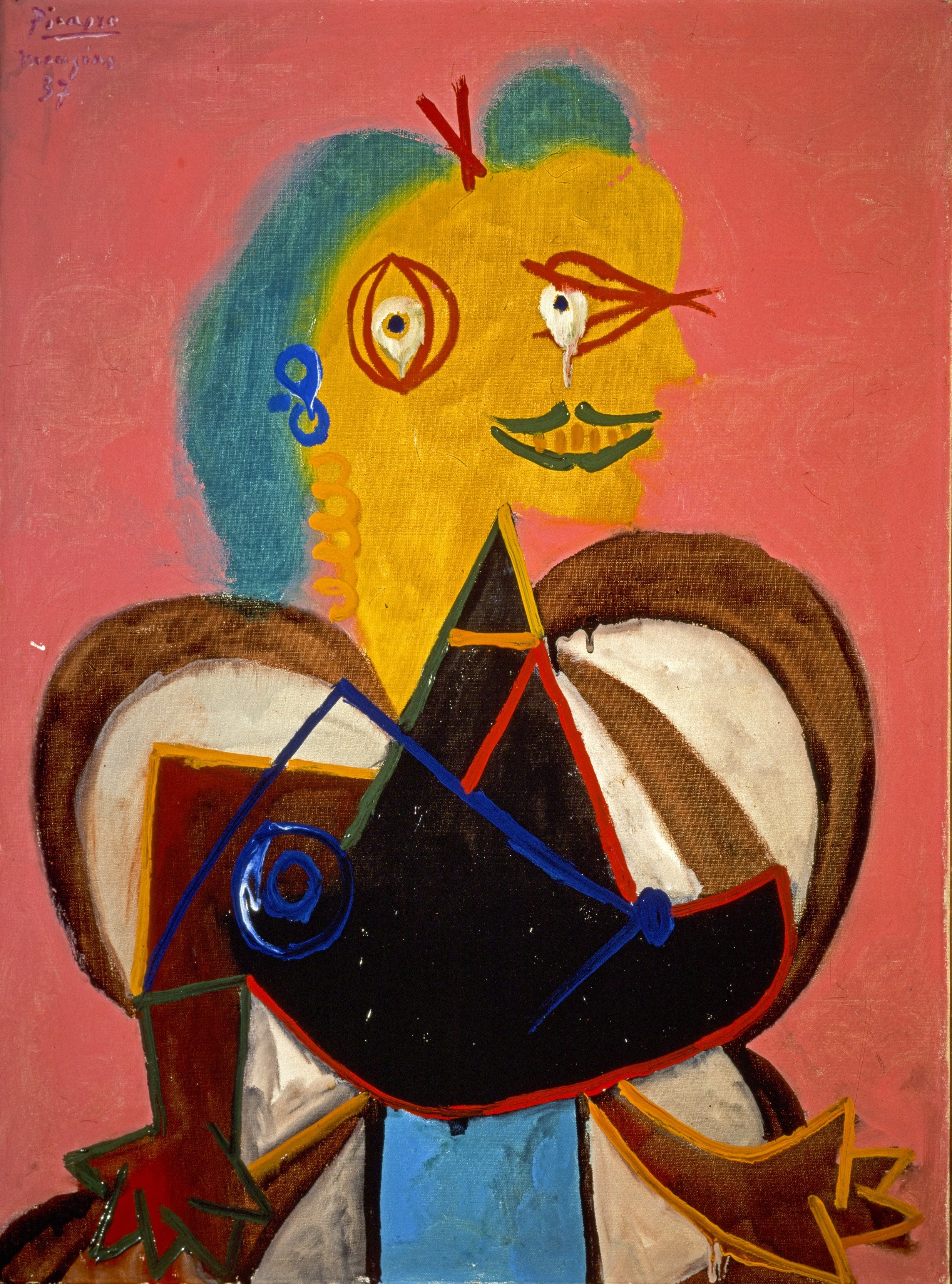When Picasso met Lee Miller
A new exhibition reveals the intimate relationship between the great painter and the Surrealist photographer

It should come as no surprise to learn that sparks flew when Pablo Picasso met Lee Miller: he was arguably the greatest painter of the 20th century, while she had an equally extraordinary life as an American model turned Surrealist photographer turned war correspondent. And their friendship is now the subject of a new show at the Scottish National Portrait Gallery.
The pair probably met sometime between 1929 and 1932, when Miller was romantically involved with Picasso’s friend, the Surrealist artist Man Ray; as well as taking some gorgeous images of the American beauty, Man Ray got her started on her own artistic pathway (in fact, she even discovered the ‘solarisation’ technique that was to become his calling-card).
But Miller and Picasso “didn’t really hit it off until they met in 1937, on a beach holiday in the south of France,” according to Antony Penrose. He's Miller’s son, who after discovering a huge collections of her pictures, dusty and forgotten in their attic after her death in 1977, set about re-establishing her reputation.
He now runs the Lee Miller Archive, and from the vast tranche of her photographs of Picasso - about 1,100 in total - Penrose has helped to choose a hundred for the show. They’ll be presented along with their (admittedly rather more abstract) mirror image: Picasso’s painted portraits of Miller.
Asked if Picasso and Miller might have been romantically involved, Penrose’s answer is breezily affirmative: “Oh god yes. Definitely.” This despite Miller holidaying at Picasso’s villa in Mougins alongside her lover Roland Penrose - who later became her husband, Antony’s father, and Picasso’s biographer. Others in the close-knit party included Picasso’s lover Dora Maar, Miller’s ex Man Ray and his new partner Ady Fidelin, as well as Eileen Agar, the poet Paul Éluard and his wife Nusch.
“They all shared each other; they all exchanged partners fluidly and without jealousy, and had great fun in so doing,” insists Penrose. Certainly, the beach-life snaps Miller took at this time make it look like tremendous fun - here’s an off-duty Picasso, sunbathing or chilling out in the shade in a stripy vest, while the woman all sport enviably groovy bikinis.
And Miller was the heart-and-soul of such eccentric extroverted gatherings, her clever conservation as well as her Vogue-gracing cover-girl looks unsurprisingly capturing Picasso’s famously roving eye.
“Of course she was very beautiful, but that was not, in itself, enough for Picasso,” posits Penrose. “What was important was she had this tremendous warmth of personality, she was always the person who made everyone laugh. She also had a very American quick wit - the New York one-liner, the wisecrack.”
Whether they shared a holiday romance or not, she certainly became a temporary muse for the man: he painted a series of six colourful portraits of Miller, one of which - Portrait of Lee Miller as l’Arlesienne - Roland Penrose bought for her. It used to hang in their house; now it will feature in the show.

Miller adored the portrait. “She loved having it in our home,” recalls Penrose. “People would say to her quite openly ‘god that’s a mess, my three-year-old kid could have done that’ - this was the standard remark about Picasso at the time - but she didn’t care in the slightest what anybody thought of it. She’d say, ‘look closely and you’ll find it has my smile’. And if you do look closely you'll see it has got her gap-toothed grin.”
Their friendship was to endure in the darker years that followed. Indeed, one of the most astonishing images of the show is of Picasso and Miller reunited at the liberation of Paris in 1944, arms round each other, beaming into one another’s faces with a pleasure that is also surely coloured by immense relief.
Arriving with soldiers to document the occasion, a uniformed Miller - who had had no word on whether her friend was alive or dead - went straight to his Paris studio. He was there. “Of course for him, it was astonishing,” says Penrose. “He made a marvellous remark: “the first Allied soldier I should see is a woman - and she is you.””
Miller’s role as an intrepid war photographer has helped re-establish her posthumous reputation - until Penrose found those boxes stuffed with around 60,000 images and negatives, her work was little-remembered. And it’s quite possible she wanted it that way: after the war, Miller lived quietly in a farmhouse in Sussex, but her up-close experiences on the front line and inside the concentration camps were to haunt her; as well as alcoholism, it’s her son’s belief she suffered PTSD.
Her photojournalism is hard-hitting, but even in documenting one of the bleakest chapters of human history, shows evidence of her artistic, Surrealist eye. Her most famous picture from this era is a self-portrait, in which she washes herself, naked, in Hitler’s bath. This may be war photography, as powerful and unsettling as any, but it is also typical of her angled approach to visual storytelling.
After the war, Picasso was to become a regular fixture in their farmhouse - indeed, Roland Penrose became a champion of his work, writing his biography and becoming known as ‘The Picasso Man’. With her eye ever on the story, Miller took a great many photographs of him that could be used to illustrate her husband's work: “she was a kind of chronicler, but she did it very generously, carefully making sure there was always something for [Roland Penrose] to draw on. It was the photojournalist in her kicking in again,” says Penrose.
And yet many of the images of Picasso in the exhibition are notable for their easy intimacy - less work, more play. Miller got the sort of access only a dear friend ever gets: “we can see the tremendous naturalness in the less formal shots, he is very obviously entirely comfortable with her. You can see that he trusts her,” says Penrose.
As well as taking pictures of Picasso visiting their home, there are shots of his - often chaotically messy - studios, portraits alongside other artist friends, and more holiday snaps. To see Picasso playing in the sea with his young son is to see a father, not a titan of art history. One shot shows Picasso’s kindly, inquisitive look at Antony Penrose, then a young boy, sat on his lap. Another, brilliantly caught, sees the two of them in apparently serious contemplation of a bull.
Of course, that was just normal for the boy; children aren’t intimidated by fame. “I knew he was somebody special, because he was special to me!” recalls Penrose fondly. “He was just this incredibly warm-hearted, cuddly, friendly person who loved children and animals. I had no idea who he was. My parents never made much of it.”
Picasso is often presented as a somewhat fearsome figure, and his fierce stare was famous. That’s present all right in many of these photographs - but when being shot by Miller, there’s often a twinkle in it too. “It’s two friends looking at each other,” sums up Penrose. “What we get is the jokey, playful, warm atmosphere that surrounded them, which is not something you hear about much.”
Lee Miller and Picasso is at the Scottish National Portrait Gallery, 23 May to 6 Sep; nationalgalleries.org
Join our commenting forum
Join thought-provoking conversations, follow other Independent readers and see their replies
Comments
Bookmark popover
Removed from bookmarks